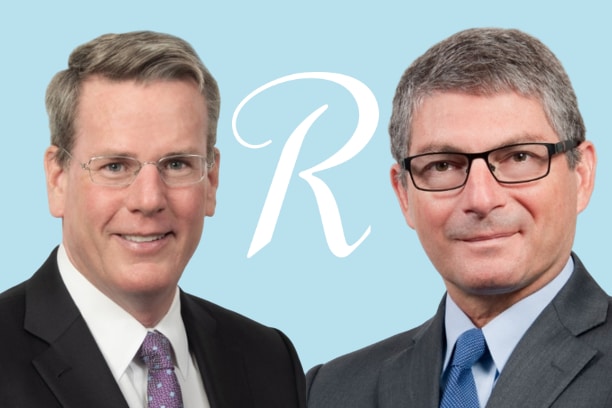RenRe increases uses of Upsilon, buys more retro, shapes portfolio for hurricane season

Bermuda-based reinsurance and third-party capital manager RenaissanceRe believes it stands better protected for hurricane season, with reduced exposure to smaller events and a portfolio that has been shaped with the help of Capital Partners vehicles, including an increased use of Upsilon, as well as more retrocession purchased.
Speaking today during the RenaissanceRe second-quarter 2024 earnings call, CEO Kevin O’Donnell and CFO Bob Qutub provided some colour on how the reinsurance company has prepared itself for the Atlantic hurricane season this year.
CEO O’Donnell highlighted the way RenRe uses its own balance-sheet and partner balance-sheets from the range of joint-ventures and insurance-linked securities (ILS) funds it operates, to help in optimising the portfolio for better outcomes through what is forecast to be a very active hurricane season ahead.
This included increased use of the firm’s Upsilon vehicle, which has typically been deployed to opportunities in the reinsurance and retrocession segments of the market, on a collateralized basis backed by third-party investors.
RenRe CEO Kevin O’Donnell said during the call, “Our portfolio shaping then, really came in with regard to using different vehicles.
“So we deployed Upsilon to a greater degree this year, we upsized our ceded from where we originally had targeted in our first pro-forma, and then the balance of risk between us and our partner balance-sheets more broadly was optimised to, again steepen the risk curve, so that if there’s smaller events we will have a lower market share compared to larger events.”
The Upsilon vehicle has shrunk over recent years, largely on the back of catastrophe losses suffered during the period where rates were far softer and terms less robust.
As what might be termed a private ILS strategy, so a fund focused on collateralized catastrophe reinsurance and retro, it’s encouraging to hear of the greater use, as this suggests more investor appetite returning for this segment of the ILS market.
As we highlighted in our article on the firm this morning, RenaissanceRe reported in its results that of $84.5 million in new third-party capital raised during the second-quarter, the company said this was primarily raised in its Upsilon RFO Ltd. structure.
Another positive signal for private ILS fund strategies focused on reinsurance and retro, we’d suggest.
CFO Bob Qutub provided some colour as to how the use of Upsilon and increased use of retro impacts premiums for the reinsurer.
“Our catastrophe gross premiums written were up by 26% and net premiums written were up by 16%. This difference relates to the purchase of additional retro and the increased use of our Upsilon vehicle,” Qutub said.
“Let me tell you how I think about this. Year-to-date property catastrophe gross premiums written were up $675 million or 35%. Year-to-date net premiums written written grew by 24%. However, on a gross to net basis, which gives effect to our joint ventures, our net retained grew by about the same as our gross.”
CEO O’Donnell went a little deeper in a further answer, where he explained how a reinsurer like RenRe can leverage its strength across multiple balance-sheets, to optimise risk for different appetites and to help control its exposure.
“We shaped our portfolio to steepen the curve, further reducing the relative risk we are taking to small events compared to larger events,” O’Donnell explained.
“The more complicated element and the one that added the most alpha to our portfolio, relative to the market, was our active shaping of the portfolio’s distribution of outcomes to decrease exposure to smaller events compared to larger events.
“We did this using our risk expertise, proprietary tools and flexible capital platform, including Capital Partners.
“This substantially reduced the relative risk to our income statement. At the same time, we shifted the entire risk curve lower, reducing risk to our balance-sheet. These actions benefit you as shareholders because we grew into a strong market, reduced your exposure to hurricane loss, and optimised portfolio returns over the full distribution of outcomes.”
O’Donnell went on to say, “I believe that we were uniquely positioned to execute on this strategy and have constructed one of the most resilient portfolios since I started here at RenRe in 1996.
“In short, if you have the right tools, it’s a good time to be a reinsurer.”
The Capital Partners business and the optionality that a multiple owned and managed balance-sheet approach provides, are critical to RenaissanceRe’s ability to manage its book while remaining one of the key property catastrophe reinsurance players in the world, particularly in the United States.
O’Donnell added that, “We actually had more success than we anticipated in some of the retro purchasing that we had. So in looking at that we were able to kind of leverage into a steeper curve, which I think a small piece of this would be, you know, our thoughts on an active wind season.
“A big piece of it was, it was a way to shape the portfolio to enhance returns.”
It’s important to note, that the way RenRe has leveraged its range of balance-sheets, owned and managed, to address exposure and optimise the portfolios, is not just good for its shareholders, it’s also positive for the third-party investors backing those structures. As it not only provides them access to the risk-return profiles they seek, it also gives RenRe the flexibility to better optimise the third-party capital vehicles’ exposure as well.
Also read: RenaissanceRe reports highest ever quarterly third-party capital & ILS fee income.






